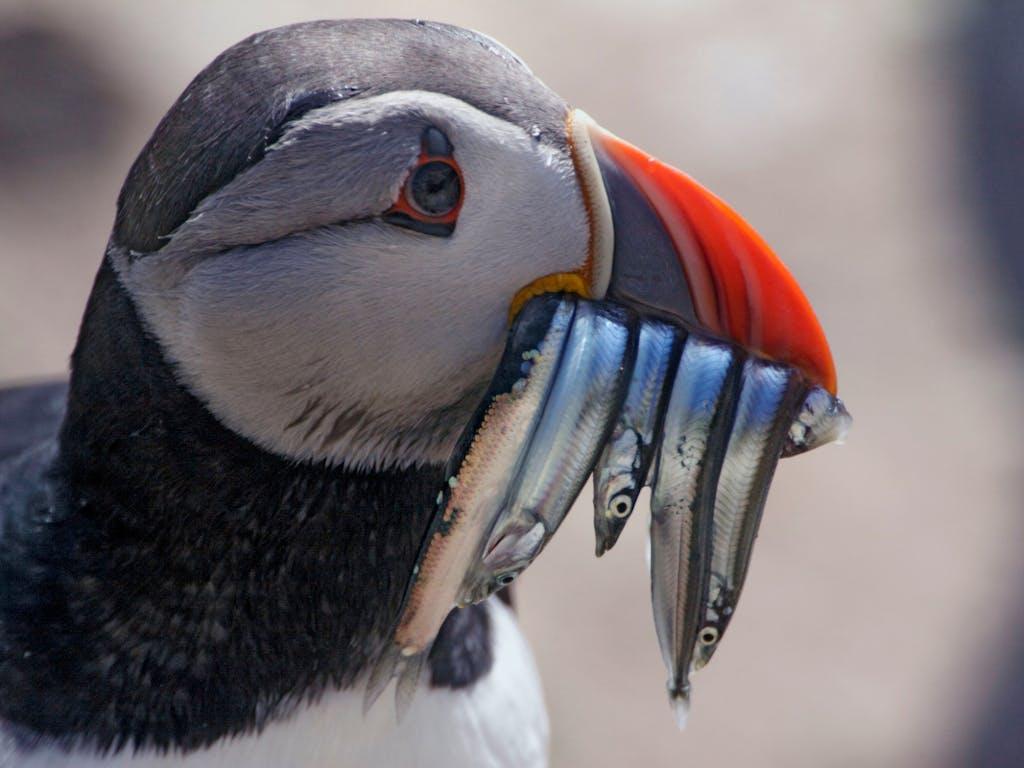Puffins
Iconic seabirds on the brink
With their colourful bills and black and white plumage, puffins are unmistakable visitors to our shores. But their nesting sites and food supply are under threat, and their UK population could plummet by up to 90% in the next 30 years. Puffins need our help.


Bright-beaked fishers
Atlantic puffins spend most of their lives out at sea, resting on the water and diving for sandeels. They don’t normally dive very deep but can go down to an incredible 50 metres or more – the height of the Leaning Tower of Pisa.
When it’s time to breed, they head for dry land, and every spring the UK welcomes roughly 10% of the world’s puffin population. In large colonies, individuals reunite with their life-long mate and lay one precious egg, usually in a burrow or a rocky crevice. For six weeks they work together to keep the egg warm until the chick hatches.
A puffin chick, or ‘puffling,’ weighs just 40g when it first emerges. Six weeks later, it weighs about 320g. It takes a lot of food to grow this quickly and pufflings need plenty of energy-rich, oily fish such as sprat and sandeels. But the climate crisis warming our oceans means these cold-water fish are on the decline, a problem that’s being made worse by sandeel fisheries.


Choppy waters
It’s not just a lack of sandeels making life tougher for puffins. Invasive rats preying on their eggs and chicks, increasingly frequent and violent storms, oil spills and the emerging threat of bird flu are all adding further pressure.
There is good news though. After a rat-eradication project led by the RSPB, Natural England, the Landmark Trust and the National Trust on Lundy Island in the Bristol Channel, puffin numbers boomed – from 13 to 375 in just 15 years – once the island was declared rat-free. Direct conservation can help.
But threats old and new continue, and if the climate crisis goes unchecked and food remains scarce, puffin numbers could decline by up to 90% by 2050. We must work to reverse the climate crisis if we want to protect our oceans and the amazing wildlife – including puffins – that call them home.
Puffins in numbers
1M
birds in the UK
10%
breed around the UK
20 years
average life expectancy
Peckish for more?
Discover more about where puffins live, the threats they face, and some stories of hope that show we can preserve nature if we take action.


Discover more about Puffins
Used as a symbol for books and other items, this clown among seabirds is one of the world's favourite birds. With half of the UK population at only a few sites it is an Red List species.











